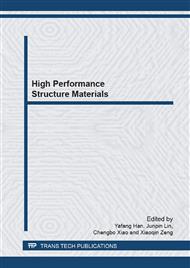p.647
p.654
p.659
p.665
p.672
p.678
p.684
p.690
p.697
Influence of Phosphorus and Boron on Creep Behavior and Fracture Mechanism of GH4169 Superalloy
Abstract:
By means of creep properties measurement and microstructure observation, the influence of the traces P, B on creep behaviors and fracture mechanism of GH4169 alloy was investigated. Results showed that during creep the twinning was thought to be the main deformation mechanism of GH4169 alloy, however the deformation mechanisms of alloy containing P, B were the twinning and slipping of dislocations activated within the grains. And the fact that the slipping of dislocations activated within the grain can delay the stress concentration in the local regions to restrain the initiation of the cracks to improve the creep resistance of the alloy. Compared to GH4169 alloy, the fracture of GH4169G alloy displayed the non-smooth surface. The adding traces P, B were segregated in the region near the boundary, which may promote the particle-like δ phase precipitated along the boundary to restrain the boundaries slipping and the cracks propagation. This was thought to be the main reason for enhancing the strength of the boundary and prolonging the creep life.
Info:
Periodical:
Pages:
672-677
Citation:
Online since:
February 2013
Authors:
Keywords:
Price:
Сopyright:
© 2013 Trans Tech Publications Ltd. All Rights Reserved
Share:
Citation:


